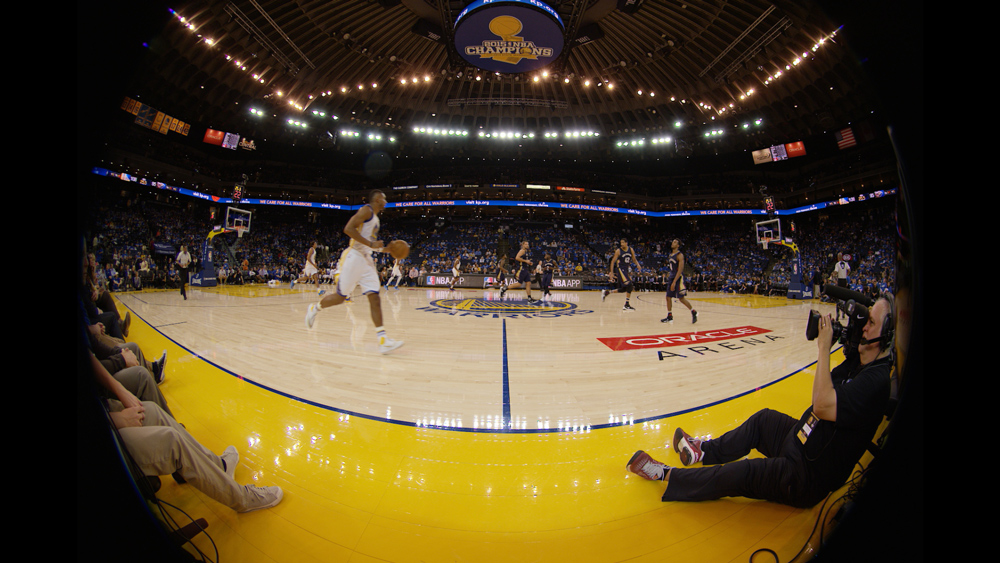After plenty of talk about AR as the next computing platform, Apple may have more interest in virtual reality than they’ve previously forecasted.
Following an April report from 9to5mac, today Apple confirmed the acquisition of VR broadcasting startup NextVR to Bloomberg. A note on NextVR’s website now highlights that the company is “moving in a new direction.”
At face value, this acquisition seems a little strange for Apple. Apple has been pushing full throttle on mobile AR, largely eschewing public activity or interest in the VR world, leaving that domain wholly in Facebook’s hands. Late last year, The Information reported that Apple had informed employees that it may be shipping a device in 2022 that combined AR and VR capabilities in a form factor similar to the Oculus Quest. That teamed with this acquisition suggests that Apple may have deeper plans for VR than they’ve previously indicated.

Over a few years of iOS presence, it’s not clear whether Apple has really come to many grand realizations around what good AR content looks like. Therefore, releasing a “mixed reality” headset in a couple years and continuing to push developer innovation on AR content while relying on a broader base of VR content satisfying users makes practical sense for a gen-one AR device.
9to5mac pinned the NextVR deal price around $100 million, a price that’s far from a thrilling end for NextVR’s investors who collectively pumped $115 million into the company, but at the same time would be a surprisingly robust exit for the company given the broader shape of the VR content market at the moment. If that’s truly where the deal ended up, that would be a lot of money for Apple to pay for something that they don’t have meaningful plans for. One of NextVR’s biggest strengths was in the partnerships they had built out over the years with sports leagues, I’m guessing Apple doesn’t care too much about keeping those partnerships active when they don’t sell devices optimized for them, but NextVR’s tech stack for broadcasting VR content broadly could paint a picture of future Apple content maneuvering.

As Apple has built out organizational heft in the content space around efforts like Apple TV+, it’s more feasible that they’d want to use an acquisition like this to get a head start in extending their content network to new devices in their pipeline.
The main problem with all of this is that VR-optimized content doesn’t translate very well to augmented reality. NextVR’s solution leverages the full field-of-view of existing VR headsets, putting users in a wholly 3D environment. There’s no technical reasons that AR headset users couldn’t eventually experience this content in the same way but there aren’t any AR headsets with the field-of-view to leverage this type of content, and advances here have been pretty slow. Existing AR devices might not be optimized for VR and vice versa, but Apple might already be organizing itself with the assumption that won’t be the case for long.
Facebook struggled for years to build out a meaningful network of virtual reality content to power its Oculus hardware. Solving the chicken-and-the-egg problem of not enough content for users but not enough users to court content developers ended up leading to Facebook unilaterally bankrolling VR development for several years. Apple could await a similar fate in AR.
With Magic Leap increasingly out of the picture, when Apple eventually debuts an augmented reality device, they may find themselves arriving onto a dead sector with little non-enterprise development organically in the works. Apple has long thrived on its developer relationships to gather early interest in a new platform, but with ARKit’s consumer interest largely failing to build thus far, it’s fair to expect that plenty of developers might have a wait-and-see approach to any ambitious AR release, leaving a heavy burden on Apple’s ability to scrounge together AR launch content.

Apple’s biggest failure with ARKit thus far has been their own inability to highlight the platform’s potential on mobile devices. Through several iterations of their AR development platform, the company has been more conservative than ever in showcasing first-party use cases. Their most high-profile reveal has been a downloadable 3D measurement app. All the while, few hits have emerged that uniquely leverage the spatial platform.
Virtual reality may be a safer place for Apple to invest in the meantime. Good virtual reality content is generally easier to make, it relies less on interacting with the real world and developers have more end-to-end control of experiences. Leveraging NextVR’s tech could give Apple access to a smooth pipeline towards a wider body of VR content that could be enjoyed on a “mixed reality” device and on more technologically advanced AR glasses down the road. Tim Cook and plenty of others in Apple’s leadership have been outspoken in their excitement for AR’s potential, but as developers continue to struggle in finding that potential, perhaps virtual reality’s appeal is growing more important to that long-term strategy.




